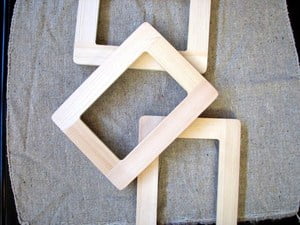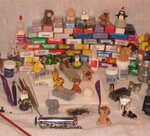Introduction
Pottery making developed all over the world, but at different times and with different levels of sophistication depending on the culture that produced it. In some parts of the world the invention of the pottery wheel really advanced this craft by improving both the speed with which objects could be made and their consistency.
In the early cultures of the Americas, however, the pottery wheel was never invented. Instead, potters used two other techniques to form objects from clay. They made thick “ropes” of clay and coiled them around and around to form a basic shape, which they then refined by smoothing out the indentations between the coils. They also used molds. This was an especially useful way to make close copies of an existing object.
Whether they were made by molding or coiling, objects were decorated in one of two ways. They could be “painted” with slip-a watered-down version of the same clay that had been used for the object-or they could be carved to produce a design that was either raised or indented.
Historical timeline
The earliest examples of pottery have come from the Zapotecs of Mexico, who created elaborately decorated funeral urns. The exact dating of these objects is uncertain, but the Zapotecs were conquered by the Mixtecs about 3,000 years ago, so their pottery is at least that old.
The Mixtecs made containers that were round, with three long legs and a cone-shaped base. They decorated their objects with many different colors of slip, including red, yellow, and blue.
The Mayans of what is now southern Mexico, Guatemala, and Honduras started making pottery about the same time as the Zapotecs, but continued for a much longer period-almost 2,500 years. Their objects also had legs, but they kept their shapes simple. They decorated their pots with animal designs and hieroglyphic-type writing.
In South America-mainly Bolivia, Peru, and the Andes mountains-the earliest pieces of pottery seem to have been black with carved figures. They were formed mostly by hand, but the Mochica people, beginning in the first century, also used the mold technique. Their decorations could be quite sophisticated, and included carved or even sculpted likeness of humans and animals.
The Nazca and the Tiahuanaco people of Bolivia frequently made vessels with two spouts that curved and eventually joined into one. This design created a sort of “handle” that would have made the object easier to carry.
Much later-from the 9th to the 12th centuries-the Pueblo Indians of Arizona and New Mexico used coiling techniques to create vessels that they then decorated with animal figures or geometric shapes. In the 14th and 15th centuries, the Aztecs of Mexico made pottery that was orange due to the way it was fired. Their decorations were at first geometric, but later evolved to become more realistic. And in the 15th and 16th centuries the Incas of South America made jugs with handles that resembled the heads of birds.
Final observations
Many cultures in the Americas never came in contact with each other. Their pottery-making techniques would have developed based on the clay and tools available to them, and on the needs of their particular lifestyles. The ways they decorated their pottery would probably have been rooted in how they saw and experienced the world around them. Studying the objects they created can provide a limited but still fascinating glimpse into how these people lived-and maybe even what they believed in as well.
Reference:
- The Big Book of Ceramics by Joaquim Chavarria DePauw University’s History of Ceramics, page 4PrincetonOnline’s page with links to many sites about Pre-Columbian ceramicsPhoto courtesy Nicolas Raymond



